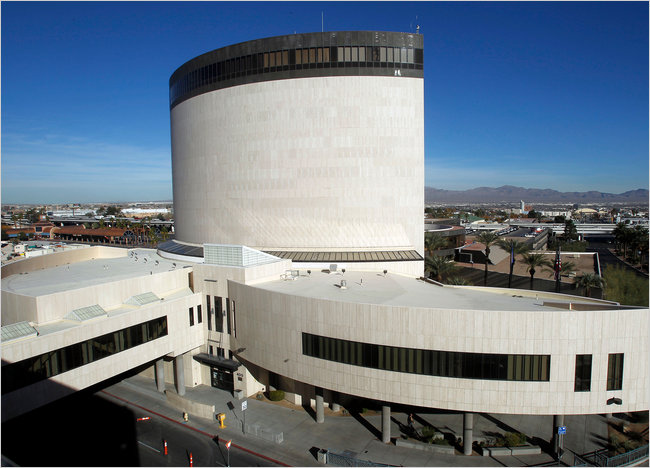I posted something a couple months back about Zappos founder Tony Hsieh spearheading a reimagining of raffish Downtown Las Vegas as a Jane Jacobs-ish walkable community for the Information Age. It’s a tall order. Here’s an excerpt from another piece about Hsieh and his master plan, this time from Greg Beato at Reason:
“In December 2010, Hsieh announced that Zappos.com was planning to move its thousand-plus employees from an office park in Henderson, Nevada, to the old Las Vegas City Hall, a transition that will happen sometime later this year. When it does, Hsieh won’t be commuting. In 2011, he leased 50 units in a luxury high-rise in the neighborhood, and he and some of his Zappos.com co-workers moved in. He’s hoping more will follow—Zappos.com employees and anyone else who wants to live in a lively, community-oriented urban neighborhood near his eight-acre worksite. It’s something he calls The Downtown Project.
Primarily bankrolled by Hsieh, The Downtown Project plans to invest $350 million in up to 200 small businesses, dozens of tech start-ups, and a diverse mix of other public resources and amenities. The ultimate goal: To create the sort of dense, walkable, mixed-used Shangri-La championed by the urban theorist Jane Jacobs in her 1961 classic The Death and Life of Great American Cities.
Put another way, Hsieh would like to make downtown Las Vegas a more compelling social network, a feature-rich platform that encourages frequent chance encounters, fruitful knowledge exchange, and over the long term, greater innovation and productivity. Where abandoned liquor stores now fester, yoga studios shall one day bloom.
In a town where development typically takes the form of another massive casino resort, Hsieh’s dream is a fairly radical vision. But Las Vegas has already replicated Egyptian pyramids, the Eiffel Tower, and the New York skyline, so why not thriving urban neighborhoods like San Francisco’s Mission District or Brooklyn’s Williamsburg?
Call it a venture-capital take on urban locavorism.”


